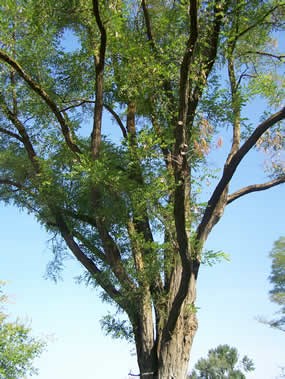
NPS You might not guess this just by looking at it, but the Black Locust tree is part of the pea family! Look closely, and you’ll see long pods hanging from the trees branches. But be careful; these pods are toxic, along with the tree’s bark and leaves. Actually, the only parts of the tree that aren’t toxic are the white, fragrant flowers that bloom in late spring. These flowers are a major source of nectar for honeybees; thus the trees are planted as a honey plant in much of the United States. In one of his letters to friends back home, Marcus Whitman asked for locust seeds. Although the trees that Whitman planted are gone, you can see other locust trees around the park today. Black locusts can be found on the mission grounds, in the grass oval in the parking area, and at the base of the hill. 
NPS |
Last updated: March 1, 2015
